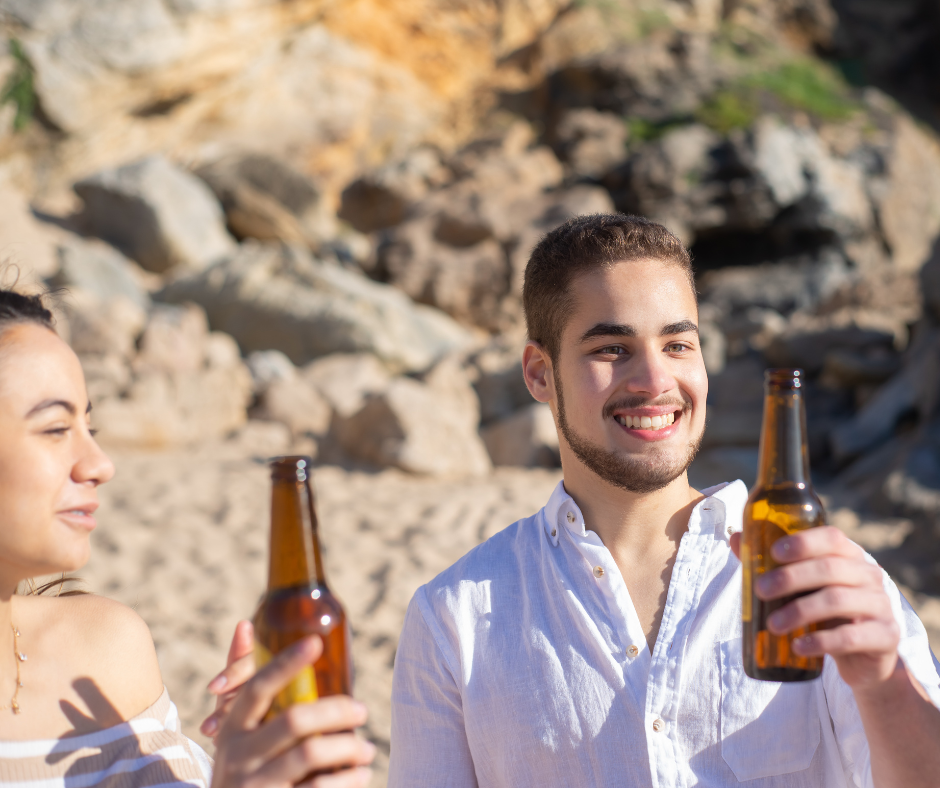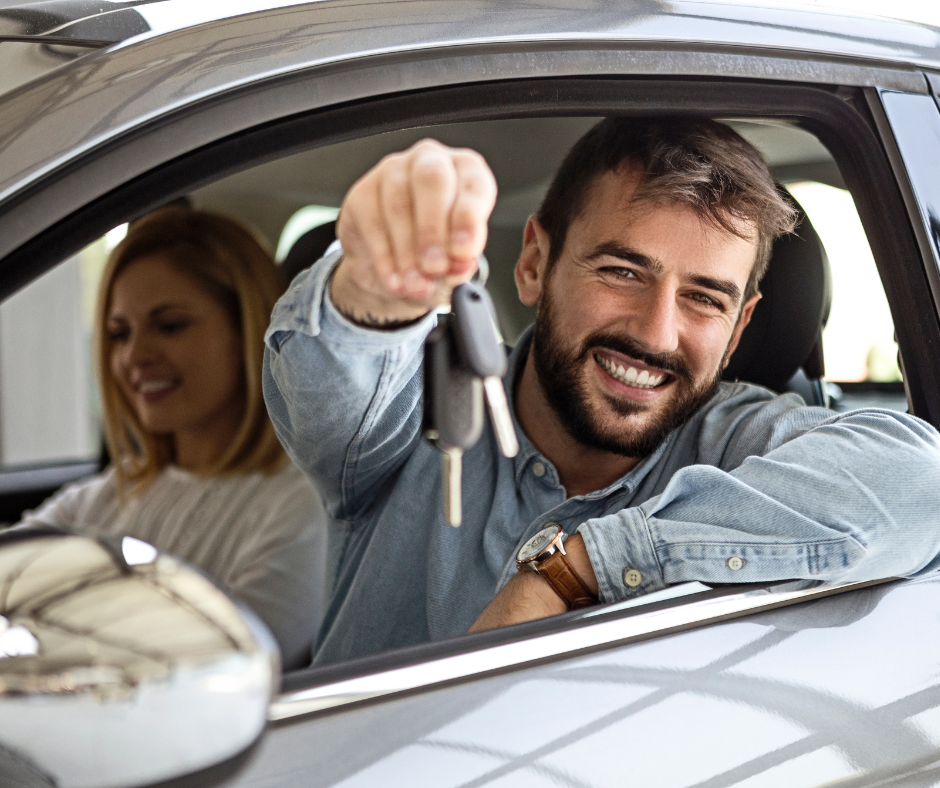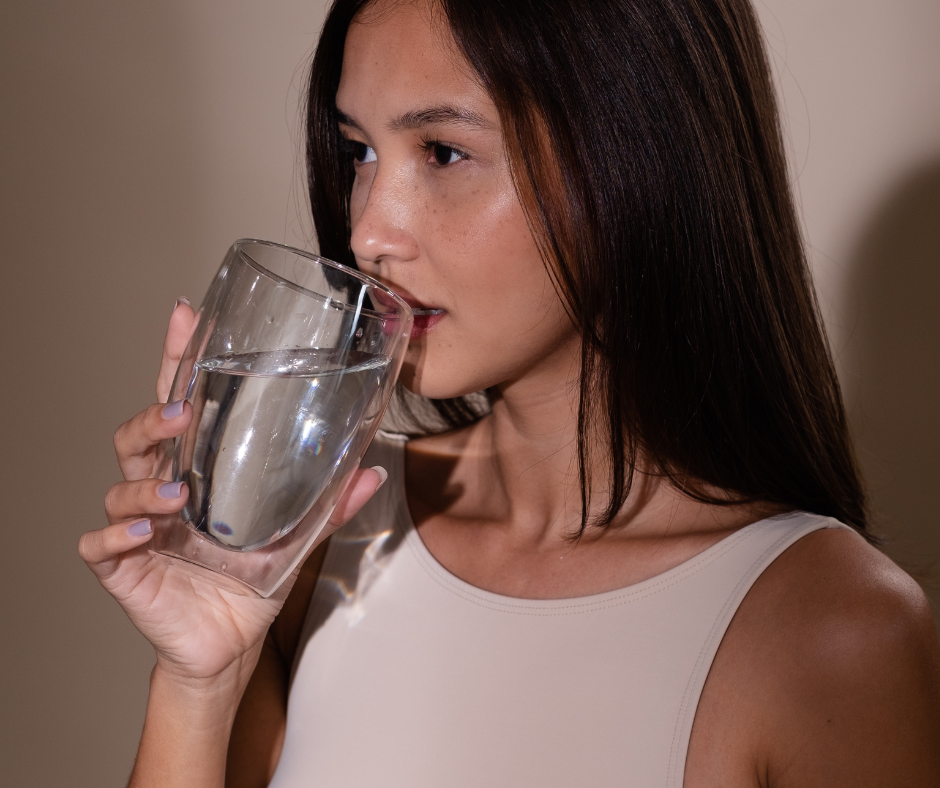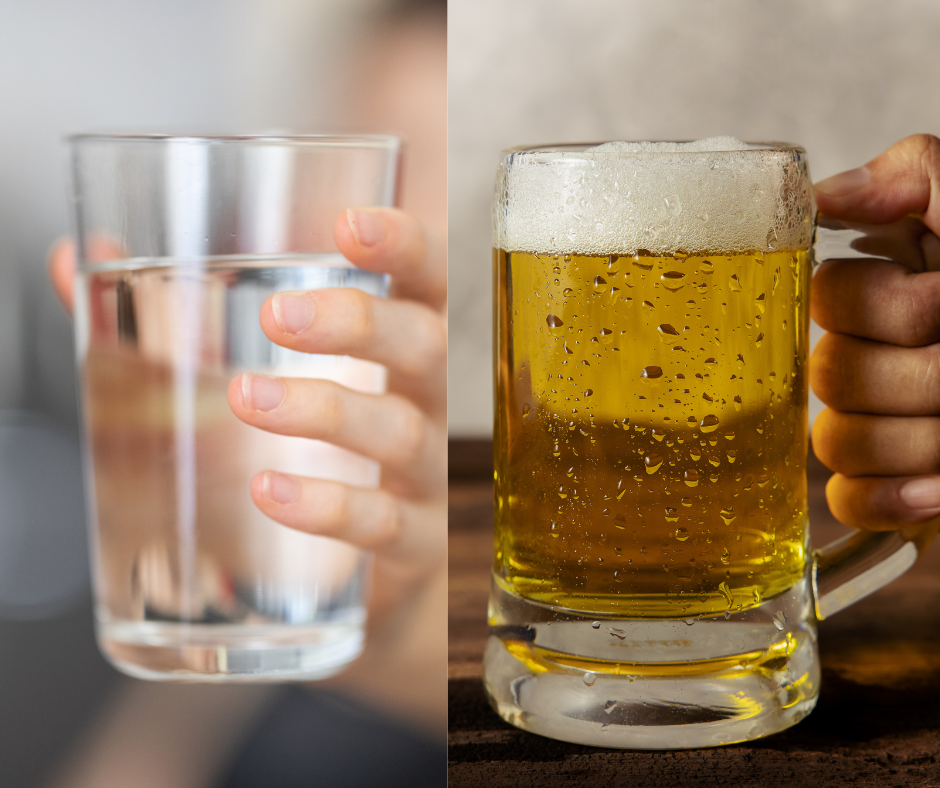Have you ever found yourself in a situation where you’ve had a few drinks and you’re wondering if you’re sober enough to drive? You’re not alone. Driving under the influence is a dangerous and potentially life-altering decision. In this blog post, we’ll provide all the tips you need on how to sober up to drive safely, debunk common myths about sobering up quickly, and suggest strategies to avoid drunk driving altogether.
We’ll cover the reality of sobering up, the role of time in alcohol metabolism, the dangers of drunk driving, and practical tips to help you feel more alert while waiting to sober up. By the end of this blog post, you’ll be equipped with the knowledge and tools to make responsible decisions regarding alcohol consumption and driving, including how to sober up to drive responsibly.
Short Summary
- Allow your body time to metabolize alcohol, understand the risks of drunk driving, and utilize strategies to stay alert while sobering up.
- Plan ahead with designated drivers or public transportation. Stay hydrated & snack on healthy proteins for energy boost.
- Monitor alcohol intake & set personal limits – alternate alcoholic/nonalcoholic drinks for smarter decisions!
How to Sober up fast:

The truth is, there are no shortcuts to sober up fast and stay sober. Your body needs time to metabolize the alcohol you consume, and attempting to speed up the process can lead to dangerous consequences. The liver processes alcohol at a rate of.015% per hour, regardless of how much or how quickly you drink. This means that the only effective way to sober up is to give your body the necessary time to break down the alcohol in your system.
Driving under the influence of alcohol can lead to serious consequences, including legal repercussions and potentially fatal accidents. It’s crucial to understand the importance of waiting until you are completely sober before getting behind the wheel. In the following sections, we’ll discuss strategies to avoid drunk driving and offer helpful tips to feel more alert while waiting to sober up.

The Role of Time in Alcohol Metabolism
Alcohol metabolism is a complex process that varies from person to person. Factors such as age, sex, weight, metabolism, and food intake can all have an impact on how quickly your body processes alcohol. However, one thing remains constant: the liver can only eliminate alcohol at a rate of.015% per hour.
This means that no matter how many tricks or remedies you try, the only way to truly sober up is to allow your body the time it needs to metabolize the alcohol in your system. It’s essential to be patient and wait until your blood alcohol concentration (BAC) has lowered to a safe level before considering driving.
Dangers of Drunk Driving
Attempting to drive under the influence of alcohol can have devastating consequences. Alcohol impairs judgment, self-control, and inhibitions, which can lead to poor decision-making and an increased risk of accidents. In the United States, the legal blood alcohol content (BAC) limit for driving is 0.08, but it’s important to note that a person can still be charged with DUI even if their blood alcohol level is under the legal limit.
Avoiding drunk driving is not only a matter of legal responsibility but also a matter of personal safety and the safety of others on the road. By making responsible choices and waiting to drive until you are completely sober, you can help prevent accidents, injuries, and the potentially life-altering consequences of driving under the influence.
Strategies to Avoid Drunk Driving

In order to stay safe and avoid drunk driving, it’s important to have a plan in place before you start drinking. This can include choosing a designated driver, using public transportation or rideshares, or arranging to stay overnight at a friend’s place or nearby accommodation. By having a plan in place, you can enjoy your night out without putting yourself or others in danger.
In the following sections, we’ll discuss the benefits of each strategy and provide tips on how to implement them effectively. Remember, the ultimate goal is to ensure that you and your loved ones can have a fun and safe night without the risks associated with drunk driving.
Designated Drivers
Designated drivers play a crucial role in helping to prevent drunk driving. Before you start drinking, choose someone who will abstain from alcohol and drive the rest of the group home safely. Designated drivers not only ensure that everyone gets home safely but also help reduce the temptation to drive under the influence.
By choosing a designated driver, you can enjoy your night out with the peace of mind that you and your friends will have a safe ride home. It’s essential to show appreciation to your designated driver for their commitment to keeping everyone safe. Perhaps offer to buy them a non-alcoholic drink or cover their food bill as a thank you for their responsible decision.
Public Transportation and Rideshares
Public transportation and rideshare services offer a safe and convenient alternative to driving under the influence. By using these services, you can avoid the dangers of drunk driving and protect yourself from potential accidents or DUI charges. Plus, opting for public transportation or rideshares can also save you money on gas and parking fees.
Plan ahead and familiarize yourself with local public transportation routes and schedules or download a rideshare app on your phone. These options not only help you avoid driving under the influence but can also reduce your carbon footprint and contribute to a cleaner environment.
Staying Overnight
Making arrangements to stay overnight at a friend’s place or nearby accommodation can be a great way to avoid driving after drinking. Staying overnight not only helps you steer clear of the potential dangers of driving under the influence but also ensures that you get a good night’s rest before heading home.
When planning to stay overnight, make sure the accommodations are safe and secure. Communicate with your host or the accommodation provider about your plans and ensure you have everything you need for a comfortable stay. By making these arrangements, you can enjoy your night out without the stress of wondering how to get home safely.
Helpful Tips to Feel More Alert While Waiting to Sober Up

While waiting for your body to metabolize the alcohol in your system, there are a few tips that can help you feel more alert and awake. These suggestions include staying hydrated, eating nutritious snacks, and engaging in light physical activity. Keep in mind that these tips won’t speed up the alcohol metabolism process, but can help alleviate some symptoms of intoxication and improve your overall well-being.
In the following sections, we’ll discuss each of these tips in more detail and provide practical advice on how to implement them effectively while waiting to sober up.
Hydration
Drinking water is essential for overall health and can help counteract the dehydrating effects of alcohol. While it won’t speed up the alcohol metabolism process, staying hydrated can help alleviate some symptoms of intoxication and make you feel more alert and awake.
A good rule of thumb is to drink a full glass of water for every alcoholic drink you consume. This will not only help you stay hydrated but also slow down your alcohol consumption, giving your body more time to metabolize the alcohol and reducing the chances of reaching dangerous levels of intoxication.
Eating Nutritious Snacks
Eating nutritious snacks while drinking can help stabilize blood sugar levels and provide your body with the energy it needs to function properly. High-protein snacks such as nuts, cheese, and lean meats can be particularly beneficial in this regard. Eating meals before, during, and after drinking can help reduce the alcohol absorption rate in your body. This promotes good health and well-being.
Incorporating nutritious snacks into your drinking routine can not only help you feel more alert but also contribute to a healthier and more enjoyable drinking experience.
Light Physical Activity
Engaging in light physical activity, such as stretching or walking, can help increase your alertness without overexerting yourself. While these activities won’t speed up the alcohol metabolism process, they can help you feel more awake and alert as you wait for your body to sober up.
Remember to choose activities that are low-intensity and don’t require a lot of energy. This will allow you to stay active without pushing yourself too hard or risking injury. Light physical activity can also have numerous health benefits, such as reducing stress, improving mood, and enhancing overall well-being.
Debunking Common Myths About Sobering Up

There are many misconceptions about how to sober up quickly, such as eating greasy food, taking a cold shower, drinking coffee, or inducing vomiting. Unfortunately, these methods won’t speed up the alcohol metabolism process and can even be dangerous in some cases.
In this section, we’ll debunk these common myths and explain why they are ineffective. Understanding why these methods don’t work can help you make more informed decisions about your alcohol consumption and avoid potentially harmful practices in an attempt to sober up quickly.
Coffee and Energy Drinks
While coffee and energy drinks can provide a temporary boost of energy, they won’t speed up the alcohol metabolism process or help you drink alcohol faster. In fact, consuming caffeine alongside alcohol can be dangerous, as it can increase the risk of heart and blood vessel problems.
Caffeine can also trick you into thinking you’re sober when you are not, leading to poor decision-making and an increased risk of accidents. It’s important to remember that time is the only way to achieve sobriety, and relying on caffeine as a quick fix can be misleading and hazardous.
Cold Showers
Cold showers might make you feel more alert, but they have no impact on your blood alcohol levels. Therefore, taking a cold shower won’t help you sober up any faster. In some cases, cold showers can even be dangerous, causing people to lose consciousness.
Instead of relying on cold showers to sober up, focus on giving your body the necessary time to metabolize the alcohol. This is the most effective and safest way to return to sobriety.
Inducing Vomiting
Vomiting might seem like a quick way to reduce your blood alcohol concentration, but it’s not an effective method for sobering up or preventing alcohol poisoning, even on an empty stomach. Alcohol is rapidly absorbed into the bloodstream, and inducing vomiting won’t result in a significant reduction of your blood alcohol levels.
Moreover, inducing vomiting can be harmful and should only be done under medical supervision at an institution like Lantana in Columbia, SC, as it can lead to electrolyte imbalances, tears in the esophagus, and other injuries. When it comes to sobering up, time is your best ally, and attempting to speed up the process by inducing vomiting can be dangerous and counterproductive.
Monitoring Your Alcohol Intake

Being mindful of your alcohol consumption is crucial to avoid reaching a dangerous level of alcohol intoxication. If you’re wondering if you can drink and still be sober, monitoring your alcohol intake can help you make responsible decisions about when to stop drinking and avoid the need to drive under the influence.
In this section, we’ll provide advice on understanding standard drink sizes, alternating alcoholic and non-alcoholic beverages, and setting personal limits on alcohol intake. By following these guidelines, you can enjoy a safer and more controlled drinking experience.
Understanding Standard Drink Sizes

Knowing what constitutes a standard drink can help you accurately measure your alcohol intake and make better decisions about when to stop drinking. In the United States, a standard drink of beer (5% ABV) is 12 fl oz, a standard drink of wine (12% ABV) is 5 fl oz, and a standard drink of spirits (40% ABV) is 1.5 fl oz. Understanding how much alcohol is in each standard drink can assist you in monitoring your consumption.
Understanding the alcohol content of different types of beer is also important, as a light beer usually contains about 4.2% alcohol, while an India pale ale (IPA) usually has a higher alcohol content. By being aware of what constitutes a standard drink, you can make more informed decisions about your alcohol consumption.
Alternating Alcoholic and Non-Alcoholic Beverages
One effective strategy for monitoring your alcohol intake is to alternate between alcoholic and non-alcoholic drinks. This can help you slow down your alcohol consumption and stay hydrated. For example, after having a glass of wine, you can drink a glass of water or a non-alcoholic beverage before having another alcoholic drink.
This method not only helps you keep track of the amount of alcohol you consume but also encourages you to make healthier choices and stay in control of your drinking.
Setting Personal Limits
Setting personal limits on alcohol intake is essential for a safer and more enjoyable drinking experience. Females should stick to having no more than 1 drink per day. Males should not exceed 2 drinks per day for moderate drinking.
By establishing and adhering to personal limits, you can make responsible decisions about your alcohol consumption and avoid the risks associated with excessive drinking. One way to do this is to be mindful of when and how much you drink alcohol.
Summary
In conclusion, sobering up to drive safely is a matter of time, patience, and responsible decision-making. “Enjoying alcohol responsibly ensures that you never have to feel sorry for your actions while drinking and avoids the consequences of excessive consumption” (Hints for Sensible, Moderate, and Responsible Alcohol Consumption and Party Hosting, Engs, 1987.) Understanding the reality of alcohol metabolism and the dangers of drunk driving is crucial in making informed choices about your alcohol consumption. By implementing strategies such as designating a driver, using public transportation or rideshares, and staying overnight, you can avoid the risks associated with driving under the influence.
Remember, there are no shortcuts to sobering up quickly. The best approach is to be mindful of your alcohol intake, give your body the time it needs to metabolize the alcohol and prioritize your safety and the safety of others on the road. Stay safe and drink responsibly!
Frequently Asked Questions
How can I tell if I’m sober enough to drive?
If your speech is slurred, you can’t stay balanced, you have delayed reactions, memory loss, or fail a field sobriety test, then it’s clear that you shouldn’t drive and are not sober enough to do so.
It is important to recognize the signs of intoxication and take the necessary steps to ensure that you are not driving while impaired. Taking a taxi or public transportation, or having a designated driver, are all good options to ensure that you and others are safe on the roads.
How long does it take to sober up to drive?
It generally takes an hour for your body to sober up and be safe to drive – approximately half to one drink per hour. So plan accordingly!
Does drinking water help sober you up?
Drinking water won’t help you sober up—it’s a common myth. The only way to sober up is to wait for your body to metabolize the alcohol. Unfortunately, there are no shortcuts!
Can I sit in my car to sober up?
Sitting in the passenger side or back seat is the best option to show that you weren’t intending to drive while under the influence. Staying away from the ignition is also important.
What are the dangers of drunk driving?
Drunk driving endangers lives, can result in severe injuries, and carries legal consequences; it must be avoided at all costs.









